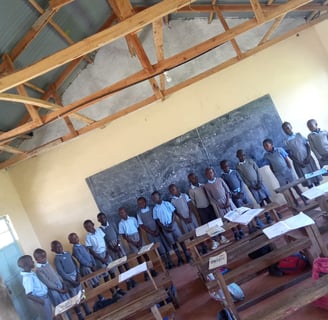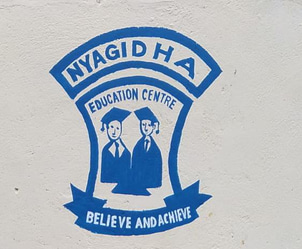Description of Current Education Curriculum
2/21/20253 min read


In the previous educational system primary or elementary and middle school education was from grade 1 to grade 8. It was 8 years in primary school, 4 years in secondary school and 4 years in university. It was known as the 8-4-4 system and is the system that Nyagidha Education subscribed to until recently. The main examination was administered at the end of the 8 years and the school progressively registered excellent results at times even ranking amongst the top three schools within the educational region on which mock exams were administered.
The Competency Based Curriculum (CBC) under the 2-6-3-3 system of education in Kenya was unveiled in 2017 to replace the 8-4-4 system of education which had served Kenya for 32 years. It has 2 years in early childhood education, 6 years in elementary school, 3 years in Junior high and 3 years in University. The conventional rote-learning method was deemed inadequate in preparing learners for the modern world that was competency based. It is learner centered as opposed to teacher centered. Its main aim is to determine acquisition of knowledge, skills, attitude & values. It ensures effective parental engagement & empowerment in the assessment of learners.
SOME KEY DIFFERENCES BETWEEN CBC AND 8-4-4 CURRICULUM:
- Entry age for the CBC learner is 4 years. In comparison, the 8-4-4-entry age was 3 years.
- Completion of Early Childhood Education is within 2 years (PP1 and PP2)
- CBC National Examination registration is conducted at grade 3 and national exams begin at that level progressing to every year until grade 6. With 8-4-4 National Examination registration was conducted in grade 8 and national exam was administered during the end of grade 8. CBC does national exams in grade 3,4,5&6 in the third and final semester of the year.
- with CBC Project activities are conducted by students throughout the year. These include projects like cooking classes, farming, raising chicken etc. which require construction of a lab and kitchens.
- with CBC the main national exam is administered in grade 6 then students proceed to Junior Secondary School (JSS) which can be in the same school or students may proceed to another school which is currently the case for NEC.
Due to funding constraints the NEC decided to stop its educational intervention at grade 6. What would it take to continue with grade 7 to 9 so that the school ensures the high-quality education is maintained? It would take an investment of USD 83,000 as highlighted in table 1 under section B.
The school had to stop the feeding program of providing porridge once a day to the students due to funding constraints. But on recent instructions from pastor Gina, this will soon commence as soon as funding for the same is received. Enrollment dropped by almost 50% once the feeding program was stopped. Indeed, if the school was able to offer lunch to the students, enrollment would increase significantly.
Please note that the minimum salary in Kenya is Kshs. 15,120 (US$95) per month and the school is in contravention of this regulation. We currently pay the least paid teachers less than 50% of this at a salary of Kshs. 6,600 (US$41) after the 10% increase. The highest paid teacher is the principal at Kshs. 11,000 ($69) per month after the recent 10% increase. This is due to the poor payment rate by the students because of poverty.
Challenges preventing NEC from embarking on grades 7 to 9:
i. The highly specialized nature of the CBC curriculum requires teachers specifically trained to teach CBC and given the poverty levels in the village on average 50% of the students are unable to afford school fees. The school would not be able to afford qualified CBC teachers. The students who graduate after grade 6 are left with the option of free primary education in the nearest government sponsored school that has as high as fifty students per class hence the vicious cycle of mediocre performance and poverty continues.
ii. The projects require laboratories and laptops which most of the students cannot afford to purchase. Without these key resources for CBC, we are setting ourselves up for failure.
iii. The current corrugated iron classes were to be dismantled and the materials used to construct an administration block and a staff room for the teachers, hence the school would need to construct three additional classes.
Briefly, whilst embarking on grade 7-9 appears to be a herculean task but with the right amount of funding, it is doable.
Support
Join us in empowering children through education.
Contact
Connect
mugambimary@gmail.com
+254 745 343564
© 2025. All rights reserved.
EST: 10-02-2010
